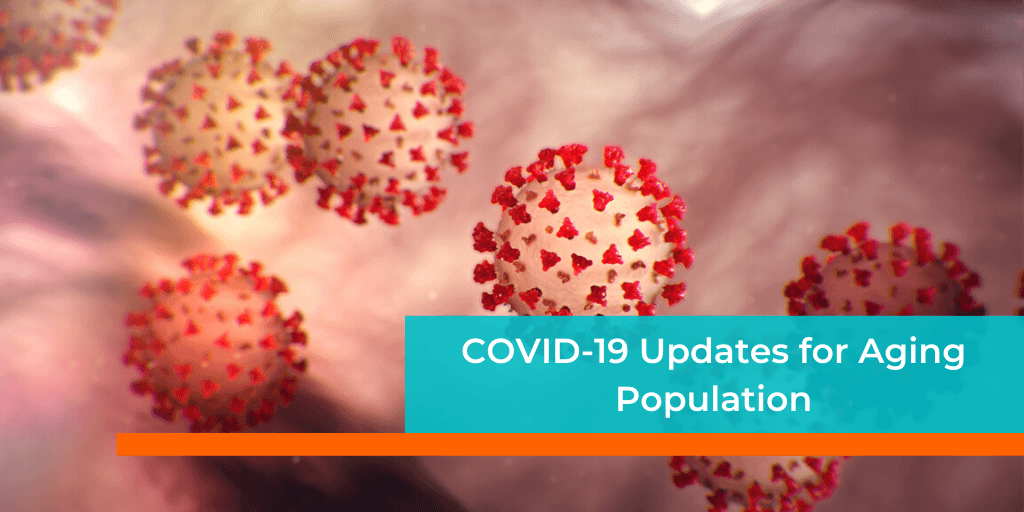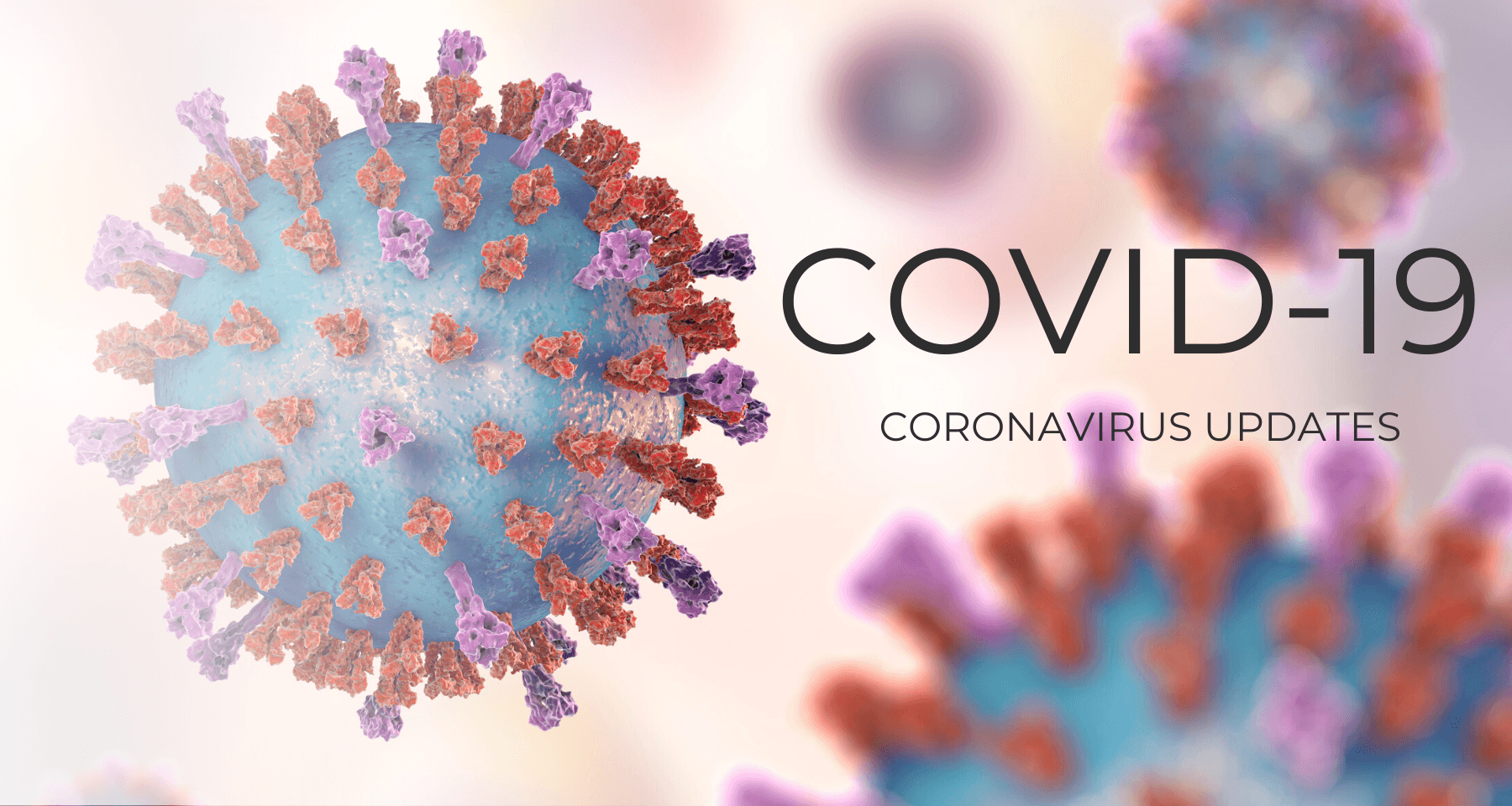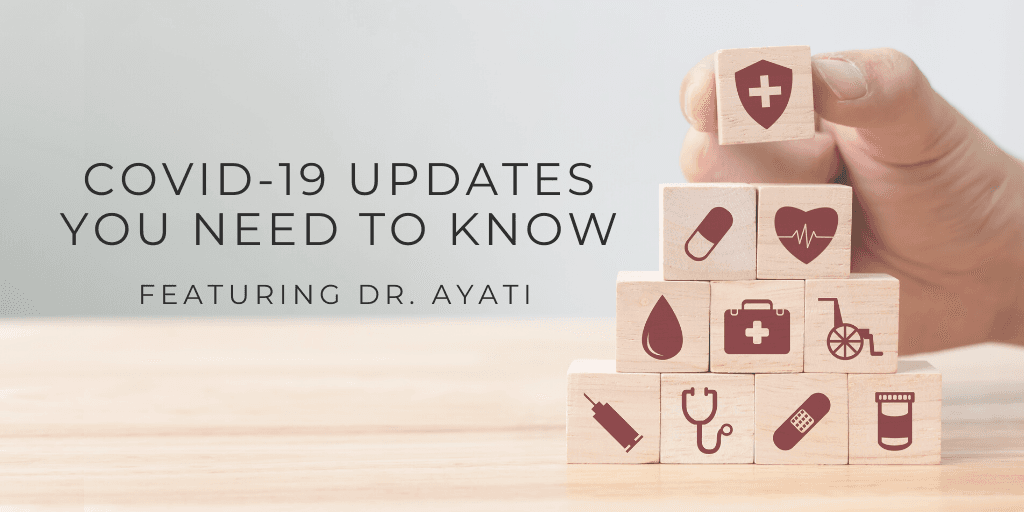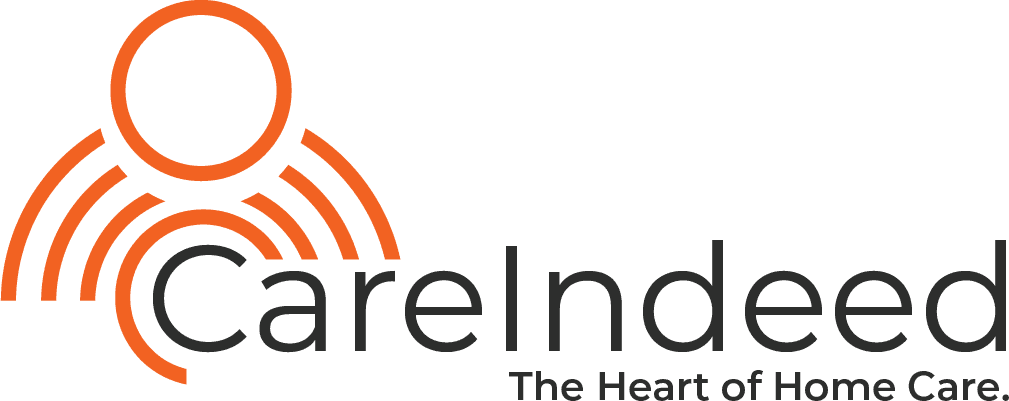
COVID-19 Updates for Aging Population
Dee Bustos
Covid-19
Mar 24, 2020
29 min read
Dr. Mehrdad Ayati, internationally known in the field of Geriatric Medicine, is a speaker, author, and adjunct clinical assistant professor at Stanford University School of Medicine. As an advisor for the Senate Special Committee on Aging, he will be sharing updates for Aging Populations on a weekly basis regarding COVID-19. In late December 2019, a cluster of unexplained pneumonia cases was first reported in Wuhan, the capital city of Hubei province in China. A few days later, the agent responsible for this mysterious pneumonia was identified as a novel coronavirus, initially named the severe acute respiratory syndrome coronavirus 2 or SARS-CoV-2, and then later called the COVID-19 by the World Health Organization (WHO). Since the beginning of 2020, in just less than three months, this virus has rapidly spread throughout the entire planet earth. As a result, every aspect of life in many countries is affected by this virus. While scientists in many countries are endlessly working on finding answers and solutions, peer-reviewed articles, research and results are limited. Many of my patients worldwide have asked me to put together an article explaining, clarifying and simplifying the latest scientific and medical facts regarding this disease.
What is the COVID-19 virus and what are its symptoms?
COVID-19 is an infectious disease caused by a new virus that had not been previously identified in humans. It appears that bats are the primary source of this virus but whether the virus was passed on directly via bats to humans or through an intermediate host is unknown. To date, there is no vaccine against this virus and no cure exists for the infection it causes. Similar to the flu, the virus causes a respiratory illness with symptoms such as a cough, fever and in more severe cases, pneumonia. The symptoms can be mild and include fatigue, runny nose, sore throat, dry cough, body pain, and fever. Or the symptoms can be more severe for some people and can lead to pneumonia, breathing difficulties and death. Older people and people with preexisting medical conditions such as heart disease, asthma, diabetes, and cancer are more susceptible to becoming severely ill. And, many people can carry and transmit the virus but show no symptoms. Based on a recent report from the Chinese Center for Disease Prevention, which included 44,500 confirmed infections, about 81 percent of infected people had mild symptoms, 14 percent had severe symptoms (such as difficulty breathing), 5 percent had critical symptoms (such as respiratory failure), and 2.3 percent fatality has been reported. However, recent smaller reports from other countries have shown slightly different numbers. For example, the estimated fatality rate from these recent studies is approximately 1 percent. While the reason for this is not clear it could be explained by factors such as genetic differences, the level of medical care provided, or due to the nature of the study itself (being done on a smaller number of people compared to the one done in China). COVID-19 is ten times deadlier than the seasonal flu, which is estimated to kill 290,000 to 650,000 a year globally.
How is COVID-19 transmitted?
Based on recent results the virus can be transmitted directly through contact with infected people, transmitted indirectly, through the touching of contaminated surfaces, viral aerosolization in a confined space, or through contact with infected people who had no symptoms. Direct contact: The virus can spread person to person via respiratory droplets. When a person with infection coughs, sneezes or talks, the virus is released in their respiratory secretions and can infect other people who are in close vicinity (less than six feet or two meters). Recent studies have indicated that the virus is also present in blood and feces of infected patients. Therefore, the virus can spread via respiratory and extra respiratory routes (such as blood and feces). The virus can also spread through contact with an infected person who has no symptoms. Indirect contact: Infection can also occur if a person touches an infected surface and then touches his/her eyes, nose or mouth. The virus can live in aerosols up to 3 hours post aerosolization, up to 4 hours on copper, up to 24 hours on cardboard and up to 2-3 days on plastic and stainless steel. The incubation and recovery period: The median incubation period for this virus is 5.1 days and 97.5% of those who develop symptoms will do so within 11.5 days. Approximately, 101 out of every 10 000 cases will develop symptoms after 14 days of active monitoring or quarantine. Recovery time is about two weeks for a mild infection and three to six weeks for severe infection.
How do we prevent contamination?
Worldwide focus should be primarily on the prevention of transmission of this virus. Therefore, self-isolation is the best method of prevention and containing this epidemic. Do not travel (for business or pleasure), do not attend mass gatherings, and cancel all unessential and nonurgent visits to doctors’ offices and other healthcare centers. Also, do not go to restaurants, shopping centers, theaters, family gatherings, and the gym to avoid close contact with people carrying the infection. Furthermore, thoroughly wash hands with soap and warm water, use alcohol (containing 70% alcohol) based wipes or bleach solutions (4 teaspoons of bleach per quart of water) to clean surfaces (even the products you buy from grocery stores and your cell phones/computers), and do not touch your face, eyes, nose, and mouth with contaminated hands and gloves. Use hand sanitizers when you have no access to soap and water. Cook your food thoroughly. Cook vegetables and fruits as well before you eat them. If you eat them raw wash their outside surface with soap and water before consumption. Cover your coughs and sneezes with disposable tissues or clothes. Avoid unprotected contact with farm or wild animals. For all elderly individuals: order your groceries and medications from online sources and pharmacies. Do not go shopping or to collect medications yourself. Once you receive them to make sure to wipe the outside of each item with wipes described above. Healthcare workers caring for infected individuals should utilize N95 or FFP3 masks, eye protection, gowns, and gloves to prevent transmission of the virus.
What should you do if you get infected or you think you might have been infected?
Unfortunately, the flu and influenza activity has been high since Oct 2019. As such doctors’ offices and healthcare centers are flooded with patients and different viruses. If you show symptoms do not go to doctors’ offices or urgent care. It will increase your exposure to other viruses and create a backlog for patients who are very ill and need urgent care. First, call your primary care physician or urgent care facilities near you. Tell them if you have had close contact with confirmed or suspected case(s) of COVID-19, if you have traveled recently, or had potential exposure to COVID-19 through attendance at events and gatherings. Follow their instructions. They will let you know, based on your symptoms, if you need to be tested. Most centers are setting up drive through testing posts to avoid the spread of the virus. Only go to the ER if you have difficulty breathing or experience extreme fatigue and sleepiness. If you do not have any symptoms but suspect that you have been contaminated, you do not need to be tested at this time. Just contact your primary care physician for instructions and self-isolate yourself immediately. Your self-isolation should last for 14 days from the date of exposure. Remember, you can be infected but show no symptoms. However, you are still contagious and can transmit the virus to other people. In the US and in many countries worldwide testing capacity for COVID-19 is limited. Public health officials are currently prioritization testing. The US Center for Disease Control and Prevention suggests prioritizing hospitalized patients to control infection, followed by individuals who have a higher risk of poor outcomes such as individuals 65 and over, people with chronic illnesses and those who are immunocompromised. Therefore, please be patient. In recent days we have sadly and shockingly observed people verbally abusing and even attacking healthcare providers who could not provide COVID-19 testing to them. That is highly unethical and unnecessary. This is a worldwide pandemic and panic and dishonorable behavior will not bring about a cure or relief.
Should I wear a mask and gloves? Mask is not recommended for the general public.
Viruses are very small particles and can penetrate most masks. Viruses can also transmit through the eyes. The COVID-19 is approximately 60-140 nm in diameter. N95 respirators (also called masks) can filter out particles greater than 0.1 to 0.3 micron in size. N95 masks, which must be fit tested, are therefore believed to offer 95 percent protection against the contact and droplet spread of the coronavirus. Most other masks do not provide protection against the COVID-19. Wear a mask if you have been infected with COVID-19 (whether symptomatic or asymptomatic) to prevent the spread of the virus. Wear a mask if someone you are in close contact with has been infected. Masks are also crucial for the health and social care workers looking after patients as well as family members who need to care for someone who is ill. Sadly, mask and glove shortages have been reported by nursing homes, doctors’ offices, urgent care, and hospitals across the US. People have been stockpiling on these items unnecessarily and jeopardizing the safety of healthcare providers. It makes us sad and frustrated when we see people with mask walking their dogs in parks! If you have these items in your household, please donate them to the healthcare centers mentioned above. Healthcare providers are the frontline fighters. They are getting sick as they do not have the personal protective equipment (masks and gloves) necessary to avoid getting infected. This will have dire consequences on the health and well being of the whole community. Gloves provide protection against viruses if they are disposed of after touching an infected person or surface. Touching your face, eyes, nose, mouth, surfaces and other people with infected gloves increase the spread of the virus.
How COVID-19 infection diagnosed?
In the US healthcare providers collect upper respiratory (nasal and throat) swabs and send them into laboratories so that they can do a test called RT-PCR on the samples. Other samples such as blood and stool have also been collected in other parts of the world and sent in for the same test. The test is painless and quick. In China and many other countries, which did or are facing the shortage of COVID-19 RT-PCR test kits, chest X-Rays, and CT Scans have been used to detect COVID-19 infection. Many doctors have reported chest CT abnormalities in patients before the development of symptoms and even before the detection of viral RNA from upper respiratory specimens. This pattern has never been observed in other infectious diseases. However, Centers for Disease Control and Prevention, as well as The American College of Radiology, do not recommend chest imaging for diagnosing the COVID-19 infection. They claim that CT Scans and chest X-Rays lack specificity as people with influenza might show the same chest imaging pattern as those with COVID-19 infection. Furthermore, cross-contamination is a big issue when COVID-19 patients are put into CT Scan units or portable radiography units are used without properly cleaning their surface in between patients.
Is there a vaccine or a cure?
Currently, there are no cure or vaccine. A commercially available vaccine is estimated to be available within a year to a year and a half from now. COVID-19 is an RNA virus. RNA viruses undergo mutation, which means that they can change. Therefore, any future developed vaccine might not protect against different mutants of COVID-19. Similar to flu the population will need to be vaccinated every year. However, it does not provide 100 percent protection against infection. Treatment for the COVID-19 is so far experimental. For mild symptoms, hydration and fever-reducing medications such as ibuprofen and Tylenol are recommended by physicians. For more severe infections an array of medications along with oxygen therapy and corticosteroids are being used in different countries. Remdesivir has been recently recognized as a promising antiviral drug against a wide array of RNA virus infection in cultured cells, mice and nonhuman primate models. It is currently under clinical development for the treatment of Ebola virus infection. Remdesivir has recently been used by Stanford hospital in a number of infected patients with COVID-19 patients with success. Another medication used with success is Chloroquine. Chloroquine is a widely-used anti-malarial and autoimmune disease medication that has recently been reported as a potential broad-spectrum antiviral drug. Lopinavir and ritonavir are sold under the name Kaletra and are designed to treat HIV. It has also been used in the treatment of COVID-19 with less success. Two other drugs called APN01 and Favilavir are also being tested in treating COVID-19 patients in China. Mechanical ventilation becomes necessary in patients with respiratory failure.
Why should the aging population avoid COVID-19 infection?
While individuals of any age can acquire the COVID-19 virus, middle age and older adults are most commonly affected by this virus. Studies of hospitalized patients infected with COVID-19 indicate the median age of these patients ranged from 49 to 56 years. In the Chinese Center for Disease Control and Prevention report mentioned above, 87 percent of patients infected were between 30 and 79 years old. Older age was also associated with increased mortality, with a case fatality rate of 8 and 15 percent among those aged 70 to 79 years and 80 years or older, respectively. The reason for the higher mortality rate in older adults is not clear. One explanation could be that the population in this age bracket have a higher rate of pre-existing conditions, which as mentioned above, can result in an increase in the severity of the infection. However, mortality has also been reported in this age group even in patients without any pre-existing medical conditions. Only 2 percent of individuals infected with this virus in the above study were younger than 20 years old. As reported by many countries symptomatic infection in children is rare. Children infected have had mild symptoms, which resolved within 24 hours. However, children can carry the virus, be asymptomatic and transmit the virus. It is not well understood why children are less affected by the COVID-19 virus. Several theories are in circulation. It could be that children have higher levels of antibodies against viruses or different responses from their developing immune systems. It could also be that the virus may not bind as well to children’s cells. While younger people with no underlying health conditions are less vulnerable to COVID- 19 infection compared to the elderly their actions will have a direct effect on the overall trajectory of this global outbreak and in protecting the most vulnerable people in the society. These actions include self-isolation, reporting symptoms to the authorities, and following quarantine instructions.
Why we should all take this virus seriously?
No one knows what percent of the worldwide population will be infected with this virus. The estimates vary from country to country. For example, Germany estimates that 75 percent of its population will be infected with COVID-19. As we have seen in the past few weeks, countries are struggling with providing tests, hospital beds, medication and ventilators for the severely sick. The pressure on the healthcare system and providers has been unimaginable. We are in unchartered waters. One thing that is clear is that as the number of infected patients in any given area increases there will be a higher need for hospitalization and intensive care units (ICU) to take care of the patients. Currently, there are not enough ICU beds and ventilators in most parts of the world to accommodate this grave situation. Therefore, just as it has occurred in Iran and Italy, there will be an Age-Based Allocation of Health Care Resources. This means that if the hospitals are overwhelmed and do not have enough ICU beds and ventilators they will give priority to younger patients over the older ones. This is a tragic decision for medical doctors and one they want to avoid at all costs. Therefore, all of us need to play our part in fighting this virus by cooperating with healthcare authorities and stopping the spread of this infection through self-isolation.
Can taking supplements, vitamins, probiotics and herbal remedies prevent the COVID-19 infections?
Most studies and research done to date do not indicate that these products can decrease or prevent infection with COVID-19 and other viruses including the flu. For example, systematic reviews have found that zinc intake is associated with a reduction in the duration and severity of cold symptoms but not prevention. If you take zinc daily, it does not prevent you from getting respiratory symptoms, but if you get cold symptoms, it may shorten the course of the disease. Therefore, while it is curial to eat healthily, get adequate sleep and exercise for overall physical and mental well-being loading your system with vitamins, supplements and over the counter remedies is not recommended. Most of these products are not controlled by the FDA (Food and drug administration) and may actually cause more harm. The overall conclusion is that the best way to prevent COVID-19 infection is to limit exposure. We need to actively follow the appropriate and up to date precautionary measures to protect ourselves, our families, and all human beings on our planet earth.
Care Indeed COVID-19 Updates

Dr. Ayati`s COVID-19 Updates: Truth or Myth?




